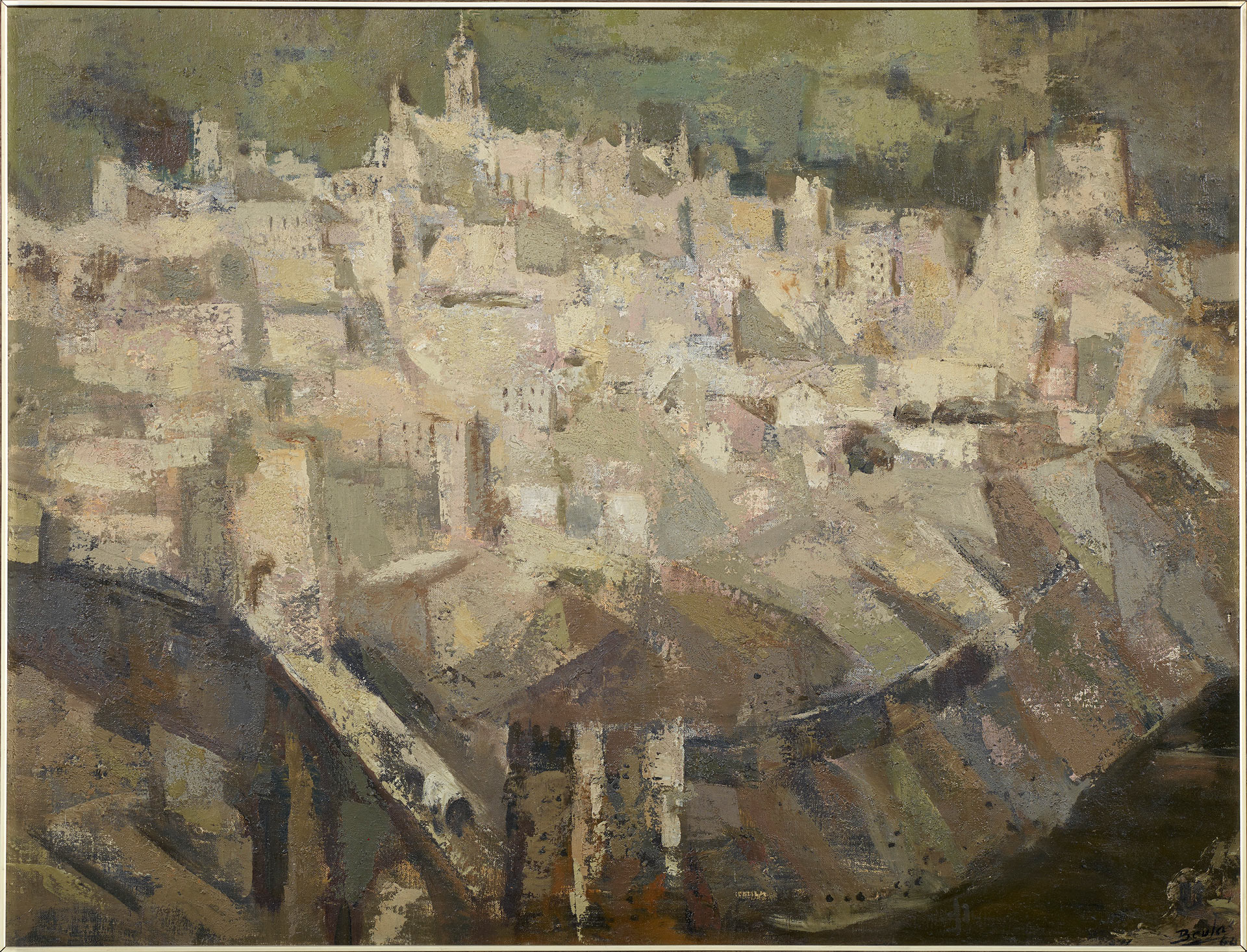
José Beulas (Santa Coloma de Farnés, Gerona, 1921)
Toledo
1964
WORK INFORMATION
Oil on canvas, 46 x 65 cm
OTHER INFORMATION
Signed in the lower right-hand corner: "Beulas 64"
At the end of the Spanish Civil War, landscape painting became a redoubt of creative freedom and modernity in which artists found expressive and formal possibilities that no longer existed in other pictorial genres. José Beulas developed a highly personal style in this field, where his Catalan roots converged with his knowledge of Mir and the influence of Meyfrén, Barradas and Vayreda, with his training at the San Fernando School of Fine Arts in Madrid and with the teachings of Stolz and Vázquez Díaz. His time in Madrid gave him a chance to discover the great Spanish painters at the Museo del Prado and to meet other artists, including Palencia and Ortega Muñoz, who would influence his work. Thanks to a grant, he lived at the Spanish Academy of Fine Arts in Rome for several years and travelled extensively in Italy, a decisive experience that persuaded him to take up landscape painting.
The common denominator in Beulas's works is their ability to capture the essence of a hardened nature whose greatest aesthetic appeal is its own simplicity and refinement. The Huesca countryside, depicted in rugged, realistic, simple compositions, the high plateau of Castile and monumental views of cities like Gerona, Ávila and Toledo are the most common themes in his oeuvre. His view of Toledo has a slightly Cubist feel, no doubt due to his proximity to Vázquez Díaz, giving rise to a harsh, rough landscape stripped of anything that might distract from its basic essence. The 1960s was the decade of Beulas's consecration as a painter, earning distinctions such as the Zaragoza Painting Biennial Prize (1962) and a first-place medal at the National Fine Arts Exhibition (1968) while holding exhibitions in Spain and the United States.
After 1969 he fixed his base of operations in Huesca, where the natural setting is completely unlike that of his native Catalonia, and gradually removed all accessory elements from his work to focus solely on essential landscapes. For a time his art was marked by the influence of Antoni Tàpies, manifested in a preoccupation with textures and the use of sands, scraping and glazes, as we see in Monte Aragón. The reduced palette and the contours of the buildings that seem to blend into the landscape lend this work a rather ghostly appearance. At first glance, we might think that Beulas's work is very close to abstraction, but we would be mistaken: the painter merely offers us a landscape passed through the filter of his unique vision of nature. In Albero Alto he presents the forms and elements of the landscape in what initially strikes us as a highly abstract manner, but he uses small daubs and strokes of ochres and browns to distinguish the different crops and fields. [Genoveva Tusell García]

